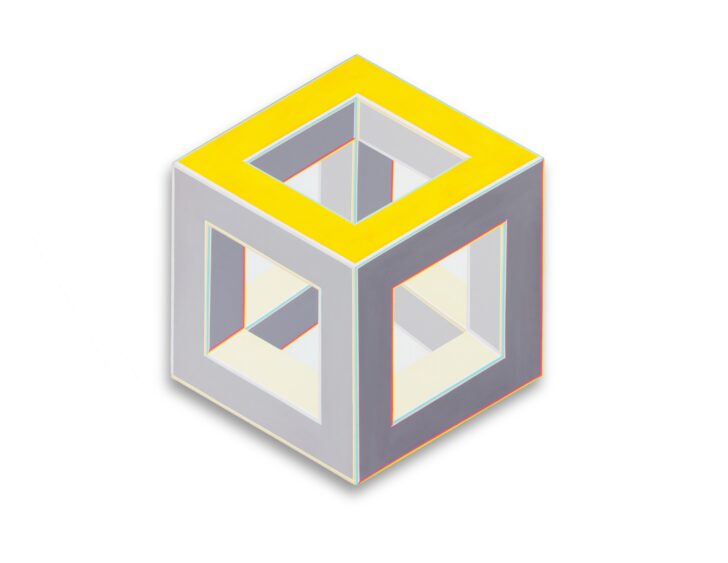Untitled Cube
Alvin D. Loving

Description
Subject Matter:
Loving was intrigued by the history of perspective in painting and wanted to create a piece in which the vanishing point for the perspective is in front of the painted surface, toward the viewer, rather than within the surface. The result is a representation of depth that seems to protrude from the surface rather than creating the illusion of space inside the canvas.
Physical Description:
A framework three-dimensional cube sits at an angle so that one of its corners appears to protrude from the center of the piece. The cube is gray, with dark gray shading on the shadowed edges, and dark and light yellow shading on the lit edges. The canvas is cut to the dimensions of the cube.
Usage Rights:
If you are interested in using an image for a publication, please visit https://umma.umich.edu/request-image/ for more information and to fill out the online Image Rights and Reproductions Request Form.